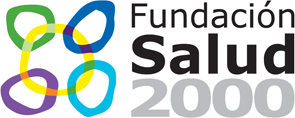ETIVITIES ELEARNING IN PRACTICE READ THROUGH THE THREE
ETIVITIES ELEARNING IN PRACTICE READ THROUGH THE THREE
E-learning in Practice
E-tivities


E-learning
in practice

Read through the three lecturer scenarios. Each scenario has the lecturer’s Program Plan and a Dialogue with Beth, the OLS e-facilitator. When you are finished reading, note down observations about how each lecturer facilitates in the Facilitation observation notes section, found at the end of the each scenario.
Scenario 1: Geri, an ICT lecturer
Program Profile
Qualification
Training
Package – C130 Diploma of Information Technology (Network
Engineering)
Name
of Units/Elements
8 clustered units of
competency in Project Management
Duration
of Program
One Semester (20 Weeks)
Learner
Profile
Aged between 17 and 35, 90% male learners
Completed Certificate III of Information Technology and Certificate IV of Information Technology (Network Management) or equivalent
About 50% go on to university with credits for this Diploma course, the rest predominantly find jobs in Network Engineering some go into other TAFE studies
These learners are sufficiently technically proficient to be able to engage in online learning without difficulty
Delivery Mode
Blended delivery – online and face to face
All material is online in WebCT
The Facilitator is available face to face for one of the six weekly hours assigned to this program
Learners can choose to only attend supervised assessments if they are progressing well
Some learners choose to attend each weekly session to discuss their progress individually
Technology Support
Learners need access to a Personal Computer configured to the Internet
Facilitator has strong web page development skills so she is able to modify and update program materials
Key Resources
This program uses an adapted (e-Kit) version of the Toolbox for Diploma of Information Technology (Network Engineering).
Assessment
Tasks
Learners must;
Submit a project specification document and a project plan via an online ‘assignment drop box’
Compile a portfolio which includes:
Postings to online discussions
Reports and tables e-mailed to the facilitator
Results for online quizzes
Complete a supervised online text
Dialogue
|
[Beth] Why did you decide to deliver this program as e-learning?
[Geri] The students want to be network engineers. They do not understand the need for the theory of project management even though it represents 60% of the core of their Diploma. They complained that the previous face to face classes were far too theoretical and lacked workplace application. I looked around and found that DEST had produced a toolbox which focused on project management units in a network engineering context.
|
|
[Beth] Could you tell us about 3 effective e-learning strategies underpinning this program?
[Geri] While the students work through the material on the web site following a week by week schedule to construct their knowledge, I facilitate with the following activities:
Discussions – the learners post to online discussions as part of their assessment and I respond to every post within a day. I only ever respond publicly in a positive manner and send a private email if I need to address any negative issues. I also make sure I address each post using the learner’s name. Emails – Some of the assessment work is submitted by email. I respond to these within a day and try to be constructive rather than critical in my responses. Through the emails I endeavour to guide the learners to correct their work. Learning buddy – I encourage everyone to collaborate with a learning buddy online. I provide a file structure where they can both post assessments and encourage them to discuss their solutions and possible improvements.
I received an e-mail from one of my part time learners acknowledging my work towards the e-learning environment I strive to achieve. They said, “It was a rather pleasant change to find someone who realises that distance education needs rapid response and the ability to keep students motivated. I have done a lot of external and distance work and have only found a couple who have matched you in this. Thanks. I look forward to meeting you again if I do any more of your units.”
|
|
[Beth] What works well in this program?
[Geri] The learners like the fact that they don’t have to attend 6 hours of Project Management lectures. They now have all the theory at their fingertips and build their own understanding of the project management concepts in an applied environment. They also like the regular and constructive feedback for the many formative assessment activities they are required to do. |
|
[Beth] How could you enhance this program?
[Geri] I am planning to add more activities and information to clarify some challenging areas of the program. I will also insist that everyone responds to others’ discussion posts to encourage more collaborative learning. |
Facilitation observation notes:
Keep a record of your notes here…
Scenario 2: June, a Hospitality and Tourism lecturer
Program Profile
Qualification
Certificate III in Hospitality (Operations)
Learner Profile
Year 11 and 12 Students living in remote areas of Tropical North Queensland.
Majority of these students are fluent users of mobile phones, Instant Messaging and the Internet.
Delivery Mode(s)
Blended
Face-to-face workshops
Print based references and learning guides
Videos
Online support via instant messaging my institute’s Learning Management System (LMS)
Text messaging (SMS) using mobile phones
Video/teleconferencing
Technology Support
Learners need access to an Internet configured PC.
Access to course materials and communication with the facilitator other users is available from home or from a technology- equipped Flexible Learning Centre run by the Institute.
Facilitator has developed skills in video streaming and web design to support the online component of this course.
Key resources
This course uses self-paced learning guides. Some of the workbook activities are facilitated via telephone role plays and web based discussions.
Assessment Methods
Online and SMS quizzes
Participation in workshop activities such as role plays and supervised printed tests
Work experience reports and workplace observations
Next page: Dialogue…
Dialogue
|
[Beth] What course/unit are you delivering via e-learning?
[June] I’m delivering Certificate III in Hospitality (Operations) to Year 11 and 12 students in nine remote high schools.
|
|
[Beth] Why did you choose to deliver this program as e-learning?
[June] After participating in a Learnscope project which developed blended print and electronic training materials, I was excited about the technology assisted delivery of practical programs in hospitality and tourism. I had also begun to notice how important mobile phones and the internet were to my students for maintaining their social networks. |
|
[Beth] Could you please describe three key e-learning strategies you use in this delivery?
[June] This program uses a mix of traditional methodologies including face to face workshops and printed texts as well as web based and mobile technology. Three particularly successful delivery strategies are: videotaped interviews with local hotel managers give students access to real life expertise and experience in their industry, online Instant Messaging using a chat tool and Short Message Service (SMS) text messaging on mobile phones for formal assessment and informal communications, and online course content including quizzes and crosswords for self paced review. |
|
[Beth] What works well in this program?
[June] Students are enthusiastic and confident about using familiar technologies that are already an integral part of their social and cultural lives. Communicating electronically provides a great opportunity to build trust and motivation; I am as real to the students as they are to me. Consequently, they feel more involved and committed to completing this course which will really broaden their career prospects in hospitality.
|
|
[Beth] What might you change to enhance this delivery?
[June] This program works extremely well. To achieve this sort of success I’d advise anyone embarking on this style of blended delivery to ensure that the following supports are in place: Technical support from your organisation’s IT section and design support with building web pages. Partnerships with local industry to provide work experience opportunities and advice on the currency and accuracy of online and print based materials. |
Next page: Facilitation observation notes…
Facilitation observation notes:
Keep a record of your notes here…
Scenario 3: Allan, an Adult Migrant English Programs lecturer
Program Profile
Qualification
Certificate in Spoken and Written English (CSWE)
These are Adult Migrant English courses funded by the Department of Immigration and Multicultural and Indigenous Affairs (DIMIA).
Each level in the course runs for a ten week term. Learners generally complete a level of the course in two terms.
Learner Profile
Range in age from 18 to 90
Represent almost every region world-wide
Many have suffered in home countries
Range of literacy levels, though many have limited or no English
May also be illiterate in their own language
Some have had no formal education experience
Delivery Mode(s)
Blended
Face-to-face classroom work
Use of Digital Coaching Aids (DCAs) such as Microsoft® PowerPoint® and Photo Story presentations
WebCT
Technology Support
Learners need access to an Internet configured PC
CD-ROMs, USB and local drives available
Key resources
This course uses bilingual support guides and grammar books as well as electronic resources. A series of excursions into the community is also part of the course.
Assessment Methods
Learners have practice assessment activities that indicate if they are ready for assessment
Assistance with booking into their nearest Adult Migrant Education Provider for a face to face test
Next page: Dialogue…
Dialogue
|
[Beth] What course/unit are you delivering via e-learning?
[Allan] Adult Migrant English Programs – for learners with very low spoken, reading, listening and writing literacy. |
|
[Beth] Why did you choose to deliver this program as e-learning?
[Allan] I use Microsoft® PowerPoint® and Microsoft® Photo Story because of the potential to combine image, text and sound. These products are easy to use and I can create simple, self paced presentations that really engage my learners and support their language development. |
|
[Beth] What are three key e-learning strategies you use in this delivery?
[Allan] I use a blended methodology which combines conventional face to face approaches to language and literacy learning with a range of Digital Coaching Aids (DCAs). These included using Microsoft® PowerPoint®, Microsoft® Photo Story and SMART Board™. Three e-learning strategies which I’ve found the learners particularly enjoy are: using a digital camera to film excursions and class activities. I then use these images to build vocabulary and pronunciation exercises in PowerPoint® and ‘pseudo videos’ in Photo Story, adding hyperlinks to PowerPoint® presentations to create small interactivities and extend the context for particular vocabulary, and assisting learners to record and replay and add dialogue to Photo Stories so they can listen to themselves and each other and repeat exercises at their own pace.
|
|
[Beth] What works well in this program?
[Allan] Learners are able to navigate their way through the presentations on individual computers so they can repeat the exercises as often as they like. The mix of face to face and digital work really appeals to them by maintaining their interest and allowing them to feel supported and secure. They also enjoy seeing images of their own class work and excursions in the materials. This really personalises their learning.
|
|
[Beth] What might you change to enhance this delivery?
[Allan] I am looking to add more interaction through using voice tools which do not rely on typed text. |
Next page: Facilitation observation notes
Facilitation observation notes:
Keep a record of your notes here…
Tags: elearning, three, practice, etivities, through
- MEDIUMSIZED PROJECT PROPOSAL 40176 REQUEST FOR GEF FUNDING AGENCY’S
- (WYKORZYSTANIE NINIEJSZEGO FORMULARZA UMOWY ZAKŁADOWEJ NIE WYKLUCZA WYSTĄPIENIA NIEPRAWIDŁOWOŚCI
- ISBARBEITSKREIS LINKEBENE SK 9 ANREGUNGEN FÜR DEN EINSTIEG IN
- L’ANALYSE CONCURRENTIELLE WWW9ALAMICOM I DÉFINITION 1) L’ANALYSE CONCURRENTIELLE
- FINANSAVIMO SUMŲ APSKAITOS TVARKOS APRAŠO ŽAGARĖS KULTŪROS CENTRAS (ĮSTAIGOS
- ZSELICI RÓZSAKERT IDŐSEK OTTHONA 7472 SZENTBALÁZS FŐ U 96
- TEXAS BEGINNING EDUCATOR SUPPORT SYSTEM 4 TEXAS BEGINNING EDUCATOR
- Ðïࡱáþÿ x9dx9fþÿÿÿx9b¥á3 п^´bjbjcx87cx87 Ò!í!íd°ÿÿÿÿÿÿl|||||||x90x90x908èät8ddffffff·¹¹¹¹¹¹8 X?öý|fffffýx||ffòxxxfp|f|f·xf·xb Xúæx90||·f8 Ux95ì&òëxx90öx93·08§ú~·xx90ät¤||||ùin the Childrenx92s
- 84 ПРОЕКТ ПОДПРОГРАММА «ФОРМИРОВАНИЕ СИСТЕМЫ КОМПЛЕКСНОЙ РЕАБИЛИТАЦИИ И АБИЛИТАЦИИ
- CLASIFICACIÓN DE LOS SUELOS LA ACCIÓN CONJUNTA DE LOS
- WE CAN HELP YOU MOVE FROM STRESS TO SUCCESS!
- G UÍA N°5 SÍNTESIS Y EVALUACIÓN FORMATIVA COVID 19
- PAG3 NATURA POEZIE PAG4 CRONICILE WARDSTONE ESEU PAG7
- 4TH DRAFT (8811) 1ST USCHILE BILATERAL WORKSHOP ON MANAGEMENT
- 2 О ВНЕСЕНИИ ИЗМЕНЕНИЙ В ПОСТАНОВЛЕНИЕ ПРАВИТЕЛЬСТВА САНКТПЕТЕРБУРГА ОТ
- LE METODOLOGIE DI CONTROLLO SONO PREDISPOSTE DALL’AGENZIA DELLE ENTRATE
- SCHOLARSHIP NAME PROVIDER TYPE OF SCHOLARSHIP CRITERIA WEBLINK COMMONWEALTH
- İMKB TÜP & İAB 65 BIRINCI BÖLÜM İSTANBUL MENKUL
- TMS 16 MADDİ DURAN VARLIKLAR GÜNCELLEMELER VE YÜRÜRLÜK TARİHLERİ
- INSTITUCIÓN VERSIÓN 10 FECHA NÚMERO DE PÁGINAS 5 NOMBRE
- NRO SENAEDGN20120364RE GUAYAQUIL 27 DE OCTUBRE DE 2012 SERVICIO
- PROTOCOLE TYPE D’ETUDE DE COHORTE 1 JUSTIFICATION DE L’ÉTUDE
- BRDGD1 DEKLARACJA PODJĘCIA DZIAŁALNOŚCI GOSPODARCZEJ 1 IMIĘ I NAZWISKO
- CURSO ACADÉMICO 2017 – 2018 HORARIO 3ER CURSO TITULO
- BİTİRME RAPORU FORMU PROJE BİTİRME RAPORU YAZIMINDA UYULMASI GEREKEN
- I A DOKTORI ISKOLADOKTORI OKTATÁSI PROGRAM MEGNEVEZÉSE TÖRTÉNELEMTUDOMÁNYOK DOKTORI
- A (NOMBRE DEL CENTRO) (LOCALIDAD DEL CENTRO) CUERDO DE
- A NATIONAL RENEWABLE ENERGY SOURCES POLICY FOR MALTA JOE
- MODÈLE DIC POUR OBTENTION & UTILISATION DE MCH DANS
- MÉTODO INTERACTIVO DE LECTURA PARA EDADES TEMPRANAS GUÍA DE
MULLION & CONSTANTINE GROUP PRACTICE MINUTES PATIENT PARTICIPATION GROUP
 U NIVERSIDAD NACIONAL DE RÍO CUARTO FACULTAD DE CIENCIAS
U NIVERSIDAD NACIONAL DE RÍO CUARTO FACULTAD DE CIENCIAS AdoptedRules02014-00045
AdoptedRules02014-00045 MEDIDAS ELÉCTRICAS POLÍMETROS OBJETIVOS • MEDIR V I Y
MEDIDAS ELÉCTRICAS POLÍMETROS OBJETIVOS • MEDIR V I YBIBLIOGRAFÍA RECOMENDADA PARA 2º CICLO OPOSICIONES A BRUJA
PRIJEDLOG NA TEMELJU ČLANKA 21 ČLANKA 33 STAVKA 1
SENDES PR BREV TIL FYLKESMANNEN I INNLANDET POSTBOKS 987
DESPLAZAMIENTO FUERA DE CASA ALEVIN TEMPORADA 201321014 JORNADA 1
 COMUNICADO DE PRENSA MEJORAR LA ATENCIÓN AL PACIENTE
COMUNICADO DE PRENSA MEJORAR LA ATENCIÓN AL PACIENTEWAYNE COUNTY CTP STATUS REPORT OCTOBERDECEMBER 2016 STUDY CONTACTS
 MORGAN STATE UNIVERSITY JOB SPECIFICATION HAZARDOUS MATERIALS ASSISTANT
MORGAN STATE UNIVERSITY JOB SPECIFICATION HAZARDOUS MATERIALS ASSISTANTQNB FINANCIAL SERVICES CO WLL QATAR CINEMA AND
EXPULSANDO VAPOR POR CAROLYN RUTH CIENTOS DE PERSONAS SE
TMMOB MAKİNA MÜHENDİSLERİ ODASI SMM BÜROSU TESCİL BELGESİ BAŞVURU
 FACULTATEA DE AUTOMATICĂ ŞI CALCULATOARE DEPARTAMENTUL CALCULATOARE TITLUL LUCRĂRII
FACULTATEA DE AUTOMATICĂ ŞI CALCULATOARE DEPARTAMENTUL CALCULATOARE TITLUL LUCRĂRIIMALO KOMBINATORIKE U VEZI ZNAMENAKA ZADATKE SAKUPILA I UREDILA
 LAHORE UNIVERSITY OF MANAGEMENT SCIENCES CS 560DISTRIBUTED SOFTWARE SYSTEM
LAHORE UNIVERSITY OF MANAGEMENT SCIENCES CS 560DISTRIBUTED SOFTWARE SYSTEM W AKULLA COUNTY PROPERTY APPRAISER’S OFFICE PO BOX 26
W AKULLA COUNTY PROPERTY APPRAISER’S OFFICE PO BOX 26 GÖSTERGE BİLİMİ YAHUT İŞARET BİLİMİ (LA SÉMIOTIQUE ) VE
GÖSTERGE BİLİMİ YAHUT İŞARET BİLİMİ (LA SÉMIOTIQUE ) VE ENLACES PÁGINAS INTERESANTES PARA REPASAR ENGLISH ESTE VERANO (PULSA
ENLACES PÁGINAS INTERESANTES PARA REPASAR ENGLISH ESTE VERANO (PULSA